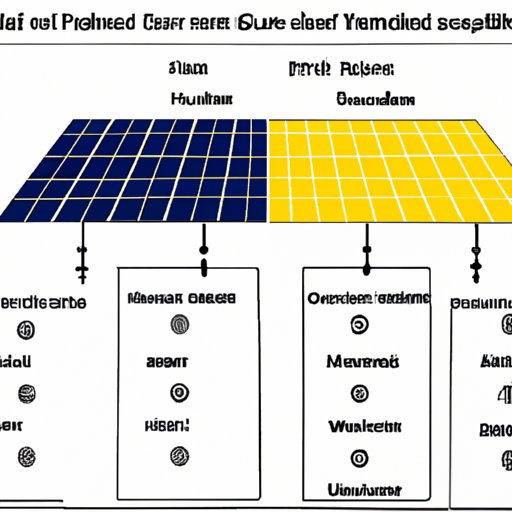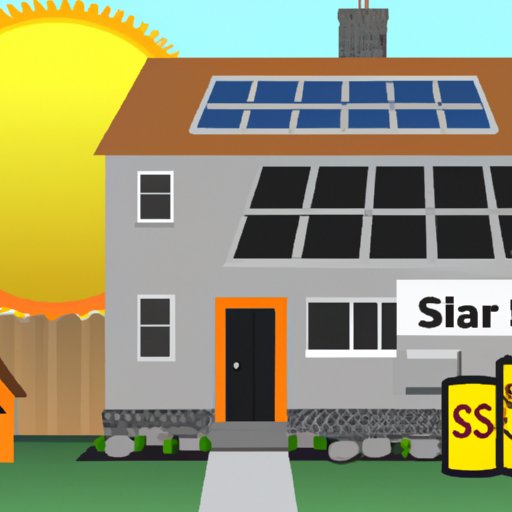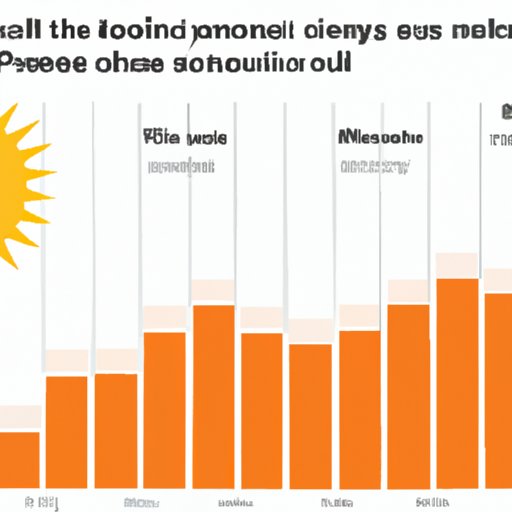Introduction
The rising costs of energy have many homeowners turning to renewable energy sources like solar power. Installing a solar system can be a great way to reduce your carbon footprint and save money on your monthly utility bills. But how much does a solar system actually cost? In this article, we’ll explore the different types of solar systems available, their costs, and how to maximize your savings.
Overview of Solar Systems
A solar system is an array of solar panels that convert sunlight into electricity. It is usually connected to the electrical grid so that excess electricity produced by the solar panels can be sold back to the utility company. Solar systems come in a variety of sizes and are typically installed on the roof or ground of a home or business. They are becoming increasingly popular due to their environmental benefits and potential for long-term savings.

Cost Analysis of Solar Systems: A Comparison of Different Types of Solar Panels
The cost of a solar system depends largely on the type of solar panel used. There are three main types of solar panels: monocrystalline, polycrystalline, and thin-film. Monocrystalline panels are the most efficient and are typically the most expensive. Polycrystalline panels are slightly less efficient but are less expensive than monocrystalline panels. Thin-film panels are the least efficient but are also the least expensive.
Solar System Installation Costs: What You Need to Know
In addition to the cost of the solar panels, there are other costs associated with installing a solar system. These include the cost of the inverter, mounting hardware, wiring, and labour. On average, the total cost of installing a solar system ranges from $15,000-$30,000, depending on the size and complexity of the system. Factors such as location, weather conditions, and the type of solar panel used can also affect the cost.

The True Cost of Owning a Solar System: What to Expect
The initial cost of installing a solar system may seem high, but there are long-term savings to consider. Depending on the size of your system and where you live, you may be eligible for tax credits, rebates, and other incentives that can help offset the cost. Over time, you can expect to see a significant reduction in your monthly utility bills, as well as a decrease in your carbon footprint.
How to Maximize Savings with a Solar System: Tips for Reducing Installation Costs
If you want to maximize your savings with a solar system, there are a few things you can do. First, consider doing the installation yourself if you are comfortable with DIY projects. This can significantly reduce the cost of installation. Secondly, research local, state, and federal incentives and tax credits that may be available to help offset the cost of installation. Finally, look into financing options such as leasing or a loan to cover the upfront cost of installation.

Solar System Cost Breakdown: Uncovering the Hidden Expenses
In addition to the cost of the solar panels and installation, there are other expenses to consider when calculating the total cost of a solar system. These include additional equipment and materials, such as an inverter, batteries, and wiring. Additionally, some solar systems require ongoing maintenance and repairs. Financing options such as leasing or a loan may be available to help cover the cost of installation and maintenance.
Conclusion
Installing a solar system can be a great way to reduce your carbon footprint and save money on your monthly utility bills. The cost of a solar system depends on the type of solar panel used, the size of the system, and other factors. In addition to the cost of installation, there are other expenses to consider, such as additional equipment, materials, and long-term maintenance. With the right research and planning, it is possible to maximize your savings and make the most out of your solar system investment.
(Note: Is this article not meeting your expectations? Do you have knowledge or insights to share? Unlock new opportunities and expand your reach by joining our authors team. Click Registration to join us and share your expertise with our readers.)
